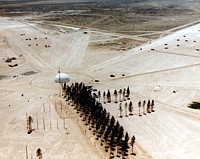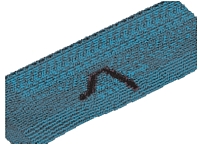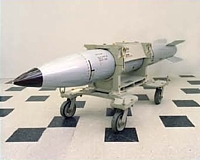A somewhat lighter shade of black penetrates my languid waking mind. The scent of turgid moist air, earthy and rich with the promise of drink arouses first a thirst, yet slowly a hunger. Not for food do I stretch and sit up nose to the wind. Coarse hatching rippling beneath one hand run down my legs a reminder of the days to do list: water, willows to roof enclosure, several bundles of bunch grass for new sleeping mat. Need whetting an appetite for activity.
The gloaming horizon cutting matt black earth from the shroud of stars and mist, opens the trackless high plains to my sight. A sinuous dragon comprised of ashen grey scales through deepest sable slippered feet descends to the foot of the hills. Listening to the not quite silent fog tiptoe across the dappled green carpet of brush I ponder the footfalls. Foliage awakening in the dewy swath sound their thanks to this cold life affirmance with innumerable yawning stretches and combined with a pelting of the forlorn desert floor with insupportable condensation, an illusion is completed within the mind.
Through a window left between two yuccas, I can see sun brightened red bands of rock more clearly than the ephemeral dun hilltops west and somewhat south of my enclosure. Whispering dryly against my knees as I change position for a greater view, the laboriously portaged sand chaffs. Sitting quiet, still and vigilant I await the chatter, hopping and fuss of my neighbors return from the springs. Soon the fat brown chatterboxes jump bush to bush into then out of my line of sight.
Waiting patiently for both the bright fire from the king of heaven to arrive at and the last tattlers to leave the springs my cold stiffened husk has time to absorb its meal of morning. First golden, the dawn seeps inside of me while I soak up the suns color leaving only shades of silver for the day. Thoroughly sated with dawns warmth I prepare my satchel: digging stick, machete, cordage for snares, empty water skins, lunch, and bedroll in case I stay the night at the springs.
Whirling into my enclosure from behind me the newborn days first Dust devil makes its gritty unwelcome presence known. Uninvited guests such as this help focus attention to the deficiency of my desert abode. A circle of Yuccas 2 yards in diameter with the infrequent gaps closed by the trunks of their fallen kin. A level floor of sand brought from the bend of a nearby dry wash compliment a sophisticated bed of volcanic stones, heated in my evening fire, buried in a shallow depression then covered with sand and lastly the aforementioned coarse woven mat.
To complete the structure my trip to the springs will secure a healthy supply of willows, long, supple, and strong. A wickiup, something like a domed tent in the middle of the natural desert house is made by lashing the poles together forming the framework to which bunch grass will be thatched. By far the longest of this natural textile is located near the springs providing a mat my ancestors would be proud to find still in use. Or at least they would recognize the thing, as my skill with weaving can be described politely as lacking a certain finish.
Along the washes cut into the foothills I breakfast on sego lillys and cakes made from dried ground rabbit meat mixed with wild currants and some fat. A wet crisp flavor something like apple crossed to a potato, the sego has a root ball some 6-8 inches below ground. Pemican is the pre-Columbian equivalent to an energy bar, and almost every fruit that dries well has been used in conjunction with: deer, elk, ground hog (called yahaa) or any meat that grinds well dry. Standing in for coffee dandelion root taken from as far as 2 feet deep washed roasted and brewed has a flavor liked or hated without mediation.
Gold from the king of heaven sucked up so greedily at dawn begins weighing on me under the clear silver pouring steadily across the trackless plateau. Shimmering clearly, yet obscuring distant hills with a palpable life, wavy strands dance in procession guiding me directly toward shade. Hiding beneath a juniper sentinel farther down the desert floor than others would dare grow, from the pressure of a daytime sun, my nose tastes the musk of impending water mixed with loam.
Soon the cooler bluff against the
Loosening my burden under a pinion pine umbrella, I sip cool relief from the canteen brought along for just such occasions. Willows in stacks, and grass in bundles wetted from my brow await the night trek down to the flats and home.




 Of course the real problem is detonating anything of any size within miles of Yucca Flats. Conventional or otherwise the clouds of dirt contaminated by the above ground nuclear tests that are going to be thrown into the sky must come down somewhere. Guarantying that Americans will be exposed to the radioactive fallout of our tests and claiming that it's being done to safeguard us from Iran is irresponsible especially in the absence of proof!
Of course the real problem is detonating anything of any size within miles of Yucca Flats. Conventional or otherwise the clouds of dirt contaminated by the above ground nuclear tests that are going to be thrown into the sky must come down somewhere. Guarantying that Americans will be exposed to the radioactive fallout of our tests and claiming that it's being done to safeguard us from Iran is irresponsible especially in the absence of proof!
